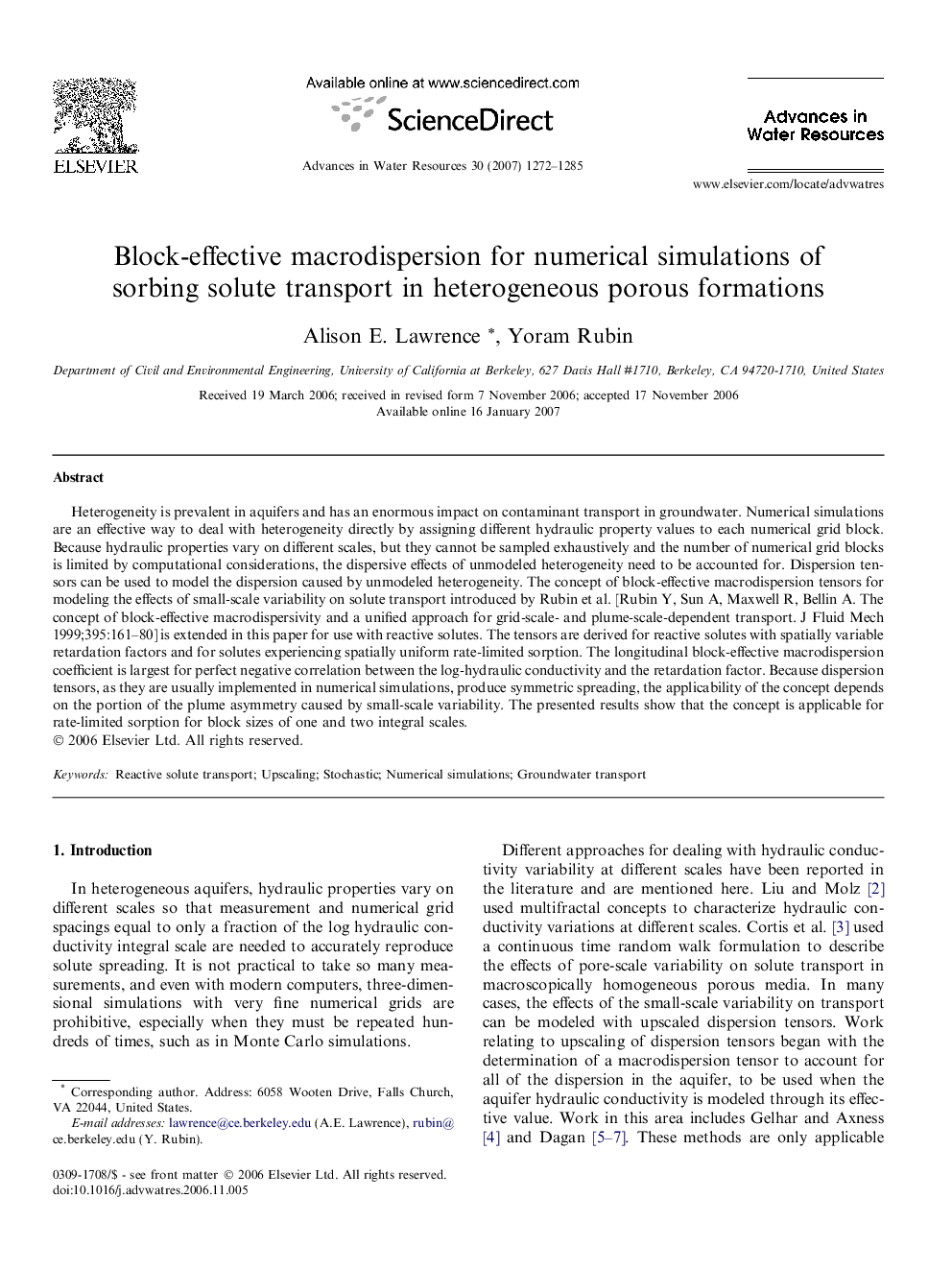| Article ID | Journal | Published Year | Pages | File Type |
|---|---|---|---|---|
| 4526766 | Advances in Water Resources | 2007 | 14 Pages |
Heterogeneity is prevalent in aquifers and has an enormous impact on contaminant transport in groundwater. Numerical simulations are an effective way to deal with heterogeneity directly by assigning different hydraulic property values to each numerical grid block. Because hydraulic properties vary on different scales, but they cannot be sampled exhaustively and the number of numerical grid blocks is limited by computational considerations, the dispersive effects of unmodeled heterogeneity need to be accounted for. Dispersion tensors can be used to model the dispersion caused by unmodeled heterogeneity. The concept of block-effective macrodispersion tensors for modeling the effects of small-scale variability on solute transport introduced by Rubin et al. [Rubin Y, Sun A, Maxwell R, Bellin A. The concept of block-effective macrodispersivity and a unified approach for grid-scale- and plume-scale-dependent transport. J Fluid Mech 1999;395:161–80] is extended in this paper for use with reactive solutes. The tensors are derived for reactive solutes with spatially variable retardation factors and for solutes experiencing spatially uniform rate-limited sorption. The longitudinal block-effective macrodispersion coefficient is largest for perfect negative correlation between the log-hydraulic conductivity and the retardation factor. Because dispersion tensors, as they are usually implemented in numerical simulations, produce symmetric spreading, the applicability of the concept depends on the portion of the plume asymmetry caused by small-scale variability. The presented results show that the concept is applicable for rate-limited sorption for block sizes of one and two integral scales.
